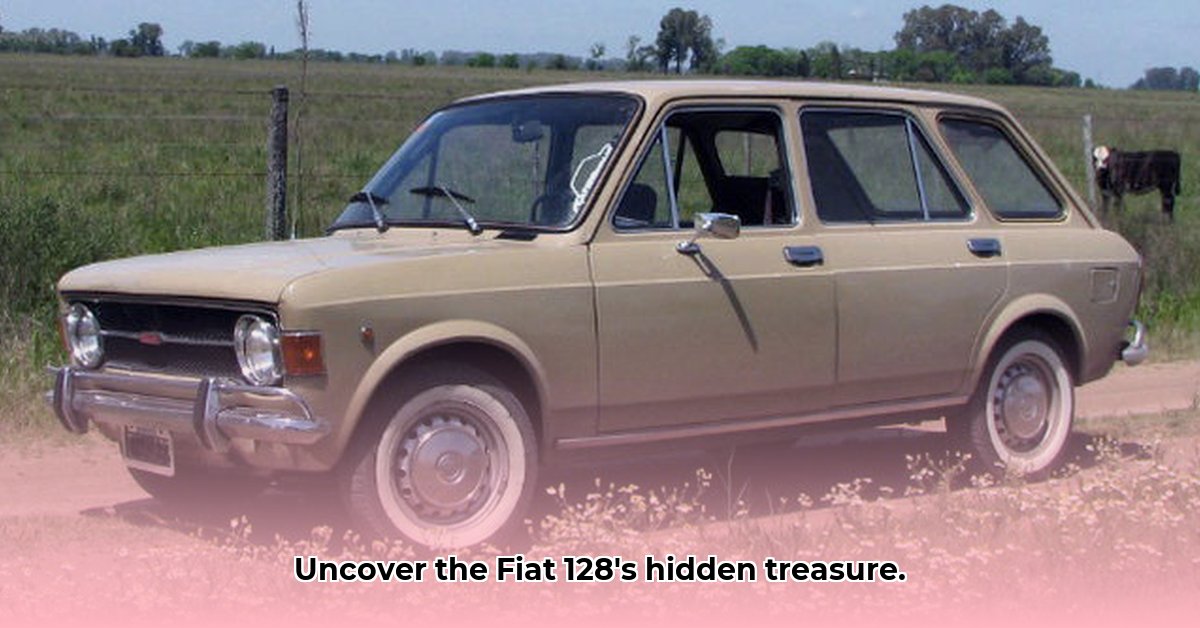
The Fiat 128 station wagon wasn't just another compact car; it was a revolution. Launched in 1969, this unassuming Italian vehicle boasted innovative engineering and a design that continues to captivate enthusiasts today. This guide explores its history, market performance, and investment potential, providing insights for both seasoned collectors and newcomers alike.
A Game-Changing Design: Small Car, Big Ideas
Forget the bulky station wagons of the late 1960s. The Fiat 128 redefined the compact car segment with its groundbreaking transverse engine layout. Instead of the traditional lengthwise placement, the engine was positioned across the car, maximizing interior space while maintaining a compact exterior. This clever design, coupled with front-wheel drive—another rarity at the time—resulted in a surprisingly roomy and nimble vehicle. The Fiat 128's innovative engineering earned it the prestigious European Car of the Year award in 1970, a testament to its revolutionary design. This innovation wasn't just about space; it also significantly improved handling, making the Fiat 128 a joy to drive. Beyond the station wagon, the Fiat 128 family also included sedans and sporty coupes, broadening its appeal.
Market Performance and Sales: A Global Success Story
The Fiat 128's success transcended geographical boundaries. Millions of units were sold worldwide, demonstrating its enduring appeal. Its design proved so adaptable that it was even licensed for production in Serbia, extending its production run remarkably until 2003. This extended lifespan is a significant factor in its current collector's market value. But how did sales translate into current value?
The Collector's Market: Assessing Investment Potential
Today, the Fiat 128 station wagon has experienced a resurgence in popularity among classic car enthusiasts. But how much is this Italian icon worth? Current prices vary considerably, influenced by several critical factors:
- Condition: A meticulously maintained, original example will always command a higher price than a neglected one.
- Mileage: Low mileage is key, reflecting minimal wear and tear.
- Rarity: Specific model years, limited editions, or rare options significantly impact value.
- Originality: The more original parts retained from the original production run, the higher the value.
Current market data suggests a broad price range:
- Low: $2,200
- Average: $12,828
- High: $27,500+
These values are estimates, and actual prices depend on many factors, including market demand and condition. Investing wisely requires careful evaluation and a thorough pre-purchase inspection.
Wasn't the Fiat 128's success solely due to its innovative design? What other factors contributed to its global appeal?
Cultural Impact and Legacy: More Than Just a Car
The Fiat 128's influence extends beyond its sales figures. Its revolutionary design influenced subsequent automotive engineering. The car's enduring appeal to collectors is a testament to its innovative design and lasting quality. The licensed Serbian production exemplifies the global impact of this car and shows its lasting relevance. This enduring legacy makes it a compelling investment for classic car enthusiasts.
How did the Fiat 128’s innovative design, beyond the transverse engine, affect its driving experience and overall appeal?
Finding Your Perfect Fiat 128: A Collector's Guide
The hunt for a Fiat 128 station wagon starts with research. Online marketplaces, classic car auction sites, and specialized Fiat forums and clubs are excellent resources. Networking within the enthusiast community can also lead to unexpected opportunities. Remember, thorough research and a qualified mechanic's inspection are key to making a sound investment.
Conclusion: A Remarkable Journey
The Fiat 128 station wagon's journey is more than a story of numbers; it's a narrative of innovation, global success, and enduring appeal. Its unique blend of practical design, innovative engineering, and lasting aesthetic presence makes it a remarkable classic car, well worth the attention of both collectors and enthusiasts. Its relatively accessible entry point into the collector car market, coupled with the potential for appreciation, makes it a compelling investment opportunity—provided the buyer approaches it with informed decision-making and a comprehensive inspection.